Can the domestic market save jobs, livelihoods and companies in China?

In early March this year, Xie Yuan (pseudonym) heard from an industry compatriot that the latter's shipment of calico (fabric made from cotton) worth US$200,000 (approximately S$280,000) were left floating in the sea for over 20 days. As the ports in Ukraine were closed, the goods were eventually returned.
As an owner of a textile foreign trade company herself, she felt shivers go down her spine even if the affected goods were not hers.
Since the Covid-19 pandemic broke out in China, Xie had been sending daily emails to update her foreign clients on China's pandemic control situation in a bid to maintain customer confidence.
When China gradually lifted lockdowns in late February, Xie immediately applied to resume operations, hoping to compensate for lost time. Little did she expect that just as she restarted her machines, bad news came rolling in: international logistics came to a standstill while orders were postponed and even cancelled.
See-saw across industries; rollercoaster for all
"The past six months have been a rollercoaster ride. The ups and downs were uncontrollable and there was no use being anxious," lamented Xie in an interview with us.
China's total imports and exports (calculated in US dollars) fell 8% between January and May this year, with a fall of 7.7% and 8.2% in exports and imports respectively.
Thankfully, apart from the European market, Xie can count on some customers she has in Australia, where the pandemic has been less serious. Furthermore, as many people have been knitting and sewing while in quarantine, the sales volume of her yarn products did not plunge. When May came, the company was finally able to take a breather.
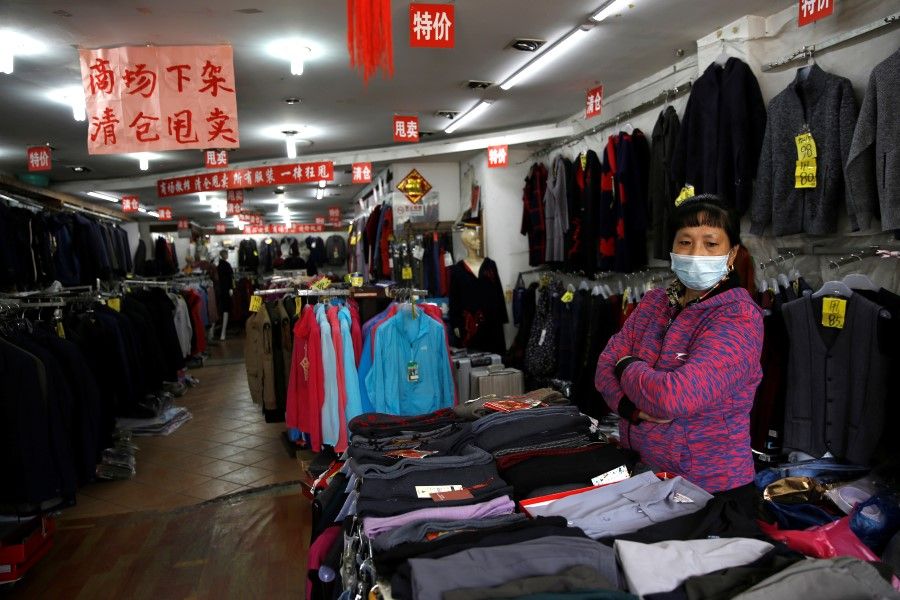
However, not all foreign trade companies were as lucky as Xie's.
Since the end of March, news has been rife about employees being forced to go on leave as garment and shoe factories in major foreign trade provinces like Zhejiang and Guangdong had their orders cancelled orders or ceased production.
According to statistics from the Chinese General Administration of Customs, China's total imports and exports (calculated in US dollars) fell 8% between January and May this year, with a fall of 7.7% and 8.2% in exports and imports respectively.
While the demand for medical equipment and machines for fighting the pandemic, as well as textile, yarn, and related exports saw an increase, export demand for consumer goods such as footwear, bags and apparel shrank significantly.
Zhou Hui (pseudonym), an apparel businessman in Zhejiang, told us that the global spread of the pandemic has seriously affected local apparel trade. He said an established garment factory in Ningbo, Zhejiang, a supplier of a Euro-American brand, has retrenched 20% of its employees following the pandemic.
Previously, at this time of year, employees in Zhou's factory of 500 would be working overtime every day to catch up with orders for autumn and winter clothing. When he could not turn around the orders fast enough, he even resorted to outsourcing some of his orders to smaller factories. Now, the factory has to survive on orders from the government and from domestic brands.
Zhou is pessimistic about foreign trade recovery. He said, "With great uncertainty in the overseas pandemic situation, the stores are closed. Where would the orders come from?"
... in the first week of June, idle fleet figures reached 521 units and 2.61 million TEUs. In 2008, while global trade was affected by the global financial crisis, idle container ship capacity was only 1.52 million TEUs at its worst.

Empty containers and idle ships
Shanghai Normal University economics professor Zhu Ying told us in an interview that apart from uncertainties amid the pandemic, the China-US trade war that began over 2 years ago, coupled with Western countries' distrust of China as a result of the pandemic as well as Hong Kong's national security law, could possibly result in partial trade decoupling and intensify foreign trade pressure in the long term.
Without goods to transport, large numbers of shipping containers are left idle, leading to overcrowding at the anchorage of China's main container ports such as Ningbo-Zhoushan port. New public anchorages even have to be built to alleviate the situation.
Although shipping demand has declined, shipping fees of the Pacific route have reached a new high since 2019.
To survive, shipping companies have to reduce capacity and eliminate shipping routes. According to statistics from international shipping analysis agency Alphaliner, in the first week of June, idle fleet figures reached 521 units and 2.61 million TEUs. In 2008, while global trade was affected by the global financial crisis, idle container ship capacity was only 1.52 million TEUs at its worst.

Teo Siong Seng, managing director of Singapore's Pacific International Lines (Pte) Ltd (PIL) told us in an interview that while the 2008 financial crisis had dealt a greater blow to Europe and the US, the current pandemic affects the whole world. Shipping companies have to adjust their sea routes to deal with a relatively higher rate of empty containers, and avoid situations where dockers refuse to unload a ship.
Although shipping demand has declined, shipping fees of the Pacific route have reached a new high since 2019. Teo said, "This is a result of shrinking trade. The rate of empty containers on the return trip is very high, particularly those on the Euro-American route. Hence, shipping companies have to increase their shipping fees."
Nearly 200 million livelihoods at stake
Although the Chinese economy's reliance on foreign trade has significantly reduced over the last decade - imports and exports amounted to 31.8% of China's GDP in 2019, a reduction of more than half from the highest proportion of 64.2% in 2006 - the impact of shrinking foreign trade is not to be underestimated.
At present, China has over 300,000 foreign trade bodies responsible for the livelihoods of over 180 million people.
"Currently, close to half of China's total export business is conducted by foreign companies in China. If foreign trade performs poorly, foreign investors would certainly lose confidence in China." - Wang Jun, Zhongyuan Bank
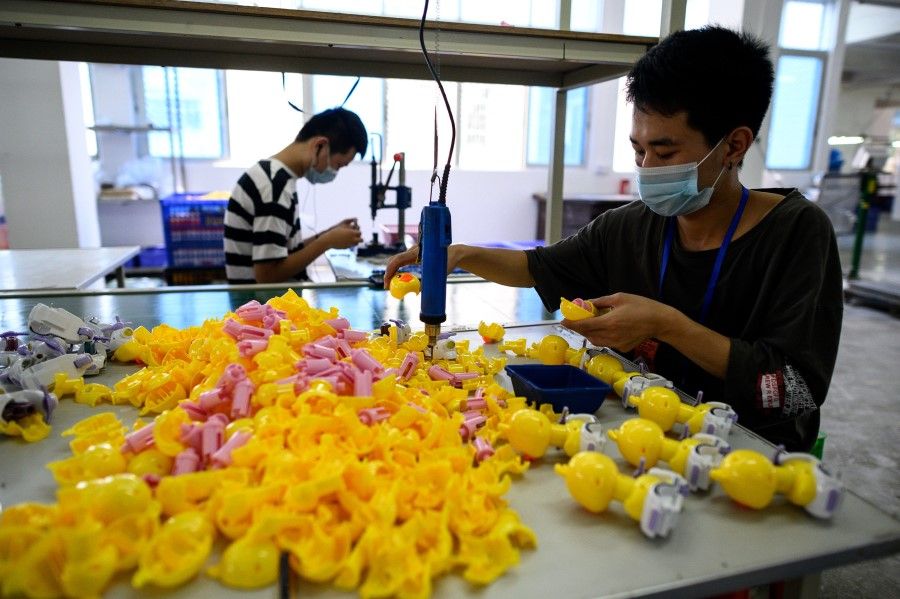
Zhongyuan Bank chief economist Wang Jun told Lianhe Zaobao that China's foreign trade is mainly concentrated in the middle and lower end of the global value chain, and focuses on labour-intensive exports. Once foreign trade declines rapidly, not only would economic growth slow down, unemployment rates would also increase, affecting the employment of rural migrant workers and middle and lower income earners in particular.
"Thus, stabilising foreign trade would not only stabilise the economy, but it would also stabilise and guarantee employment amid the pandemic," Wang explained. Besides, foreign trade also affects foreign investor confidence in the Chinese market. "Currently, close to half of China's total export business is conducted by foreign companies in China. If foreign trade performs poorly, foreign investors would certainly lose confidence in China."
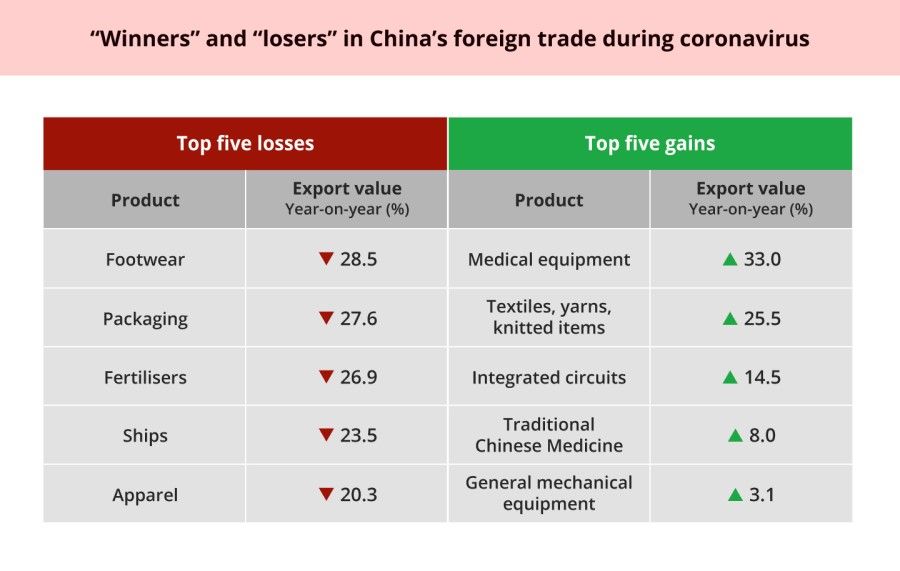
Transformation of export-oriented economy easier said than done
Chinese officials have recently proposed the idea of switching from export to domestic sales in an attempt to direct the production capacity of the overseas market to the domestic market. Last month, the Chinese State Council issued a circular in support of this effort. Soon after, major foreign trade provinces such as Zhejiang came up with relevant policies.
However, constrained by factors such as limited domestic sales channels, a lack of homegrown brands, and differences in domestic and foreign trade settlement methods, the results of these efforts were unsatisfactory.
This is not China's first attempt at targeting its domestic market. When its foreign trade industry faced similar challenges in 2008, officials also launched similar policies. For example, in early 2009, Beijing gathered over 100 foreign trade companies to participate in a trade expo; the "home appliances for the countryside" (家电下乡) projects were also launched, tapping into the purchasing power of farmers. Also in 2009, China's most renowned China Import and Export Fair, or the Canton Fair, first designated a section for companies keen on directing exports to the domestic market.

However, constrained by factors such as limited domestic sales channels, a lack of homegrown brands, and differences in domestic and foreign trade settlement methods, the results of these efforts were unsatisfactory. While the idea of switching from export to domestic sales is on the agenda again, there are still obstacles impeding its successful implementation.
"Companies all want to have both overseas and domestic orders, so that they have more options in a crisis. But only the big companies or the very competitive small and medium sized companies can do this." - Prof Qian Junhui, Shanghai Jiao Tong University
"The domestic market is just about full"
Professor Qian Junhui of the Antai College of Economics & Management at Shanghai Jiao Tong University said that it is not easy for foreign trade companies to change or transform themselves, as this has much to do with the costs of domestic trade and industry competition.
"Companies all want to have both overseas and domestic orders, so that they have more options in a crisis. But only the big companies or the very competitive small and medium sized companies can do this."
"Developing the domestic market would involve product development and design, but there are very few overseas-focused companies that have their own brand and their own design capabilities." - Wang Lei, textile company owner
Wang Lei, who owns a textile company in Anhui that does overseas trade, said that switching from export to domestic sales is "easier said than done".
He explained that there are two ways for an apparel factory to make the switch: to manufacture for domestic brands or develop their own brands. The former option is almost saturated, while the latter does not happen overnight.
"Most factories in overseas trade operate according to orders; they just produce whatever clients order, and the designs are all ready-made. Developing the domestic market would involve product development and design, but there are very few overseas-focused companies that have their own brand and their own design capabilities."
Industry players also pointed out that the domestic and international markets operate on different rules. For example, domestic sales usually work on credit, where delivery is taken before payment is made, which is tougher on companies' cash flow. Companies focusing on overseas trade may not be able to adapt to this.
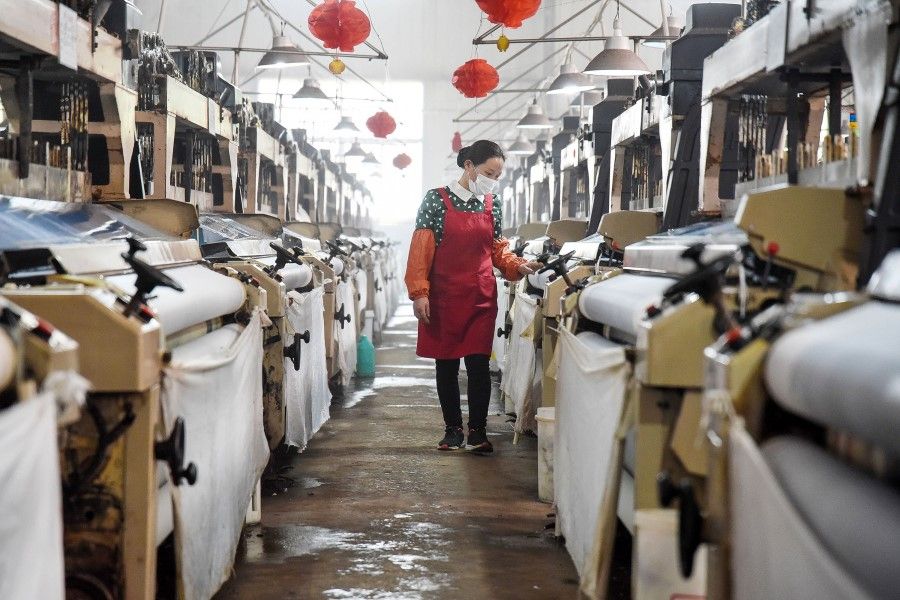
Besides, there are different domestic and international standards for some products. For example, European and US clothes sizes and styles are different from those in China.
A businessman surnamed Weng, who owns an electrical equipment company in Zhejiang, said that in terms of electrical products, the US, Europe, and China use three different safety accreditation standards - UL, CE, and 3C. Shifting from export to domestic sales would require applying for new accreditation, and some products would have to be adjusted.
The authorities have recently introduced policies to try and resolve these difficulties, including making accreditation and tax processes easier, and encouraging financial institutions to provide guarantor and funding services and greater credit support, such as liquidity loans.
However, for companies, getting through the steps above is not enough for overseas-focused companies to get out of difficulties.
Mr Weng said frankly that without experience in domestic sales, the biggest difficulty is to quickly open up domestic sales channels, because "the domestic market is just about full".
Consumer spending currently accounts for about 40% of China's GDP - that figure is about 70% in the US.
Boost needed for low-income group
Many analysts are also not optimistic about exports shifting to domestic consumption, due to the question of whether the domestic market has sufficient appetite for production originally meant for overseas markets.
Consumer spending currently accounts for about 40% of China's GDP - that figure is about 70% in the US. This shows that China's consumer market is not yet saturated. However, China's income is polarised, with the bulk of China's population among the lower-income earners.
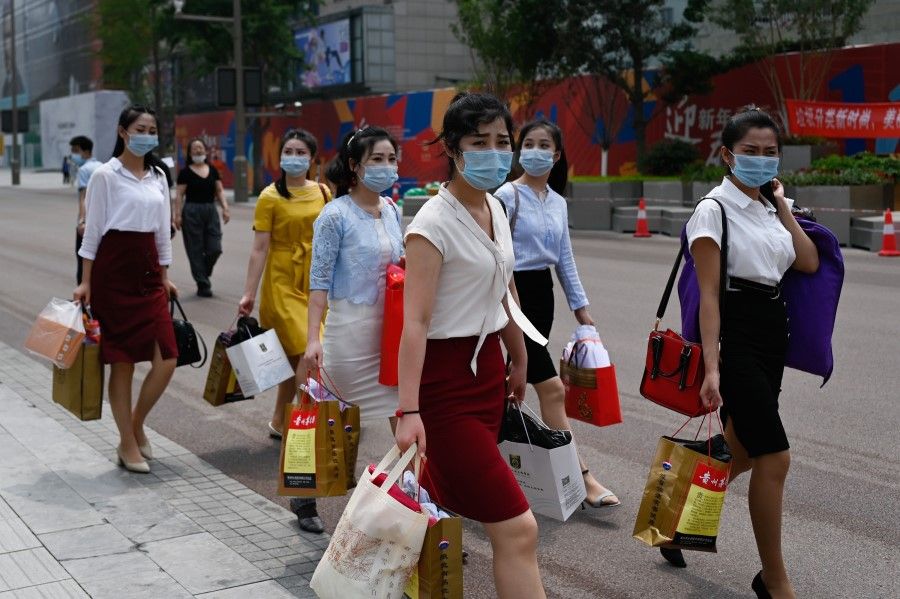
At a press conference of China's Two Sessions this year, Chinese Premier Li Keqiang said about 600 million people in China earn an average monthly income of just 1,000 RMB (S$200). Some analysts have pointed out that if consumerism is to "take over" from overseas trade, there has to be a boost for the low-income group, so that they have greater consumer potential.
Prof Qian said, "If the income gap is large, with most people having a very low income and a handful with a very high income, consumer spending will still be weak, because the wealthy have a higher marginal propensity to consume (MPC) than the poor." (NB: MPC refers to the increase in spending for each additional dollar increase in income.)
Coronavirus may drive transformation of overseas trade industry
However, despite the shadow that the coronavirus pandemic has thrown over the overseas trade industry, it is not all gloom and doom for companies. Academics and company owners think that this crisis may drive the transformation of the overseas trade industry.
Take home appliance company Galanz, based in Shunde, Guangdong. In March, seeing the global spread of the coronavirus, it immediately prepared live broadcasts for overseas markets according to products and time zones, and moved its operations from taking part in exhibitions and face-to-face sales to the cloud.
The company also conducts internal training and selection of salespersons who can do "screen-to-screen" sales to foreigners, and has converted the staff cafeteria into a broadcast studio.
At this year's Canton Fair - the largest and oldest trade fair in China - Galanz arranged for round-the-clock live broadcasts in more than ten languages, including English, Japanese, Korean, and Spanish, to introduce its products to clients in various time zones. It also used VR technology to take purchasers from various countries on a virtual tour of its new Industry 4.0 base, to boost clients' confidence in its production capabilities.
"Going digital is probably the future trend; the coronavirus just accelerated this shift. For companies, this might be an opportunity found in danger." - You Limin, Galanz
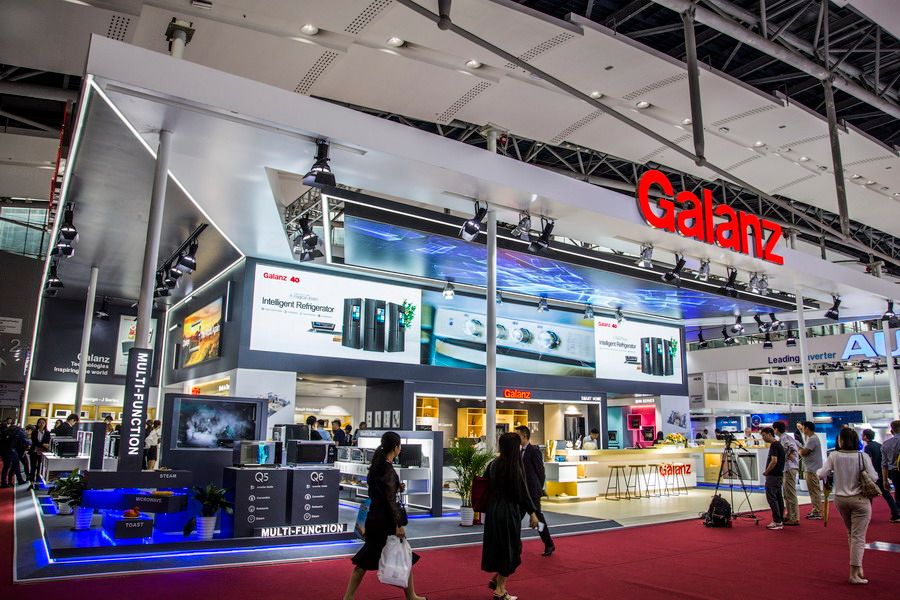
Thanks to the stay-at-home economy, and with companies actively opening up new sales models, Galanz has stabilised its exports for the first half of this year - its export earnings on microwaves and refrigerators to North America has even grown by at least 27% and 40% year-on-year.
You Limin, director of Galanz's development and strategy department, said, "Going digital is probably the future trend; the coronavirus just accelerated this shift. For companies, this might be an opportunity found in danger." (NB: In Chinese, "crisis" 危机/wei ji is made up of the characters for danger 危/wei and opportunity 机/ji.)
Companies leaving behind low-tech, low-value-added traditional manufacturing
The pandemic has also led some companies to commit to leaving behind low-tech, low-value-added traditional manufacturing.
Li Zhengshun, who has many years of experience in the production of vehicle brake components, said his company earned nearly 20 million RMB in 2018, with exports making up over 30% of that figure. In the first half of this year, due to the impact of the coronavirus, exports were only one-fifth of last year's figures over the same period.
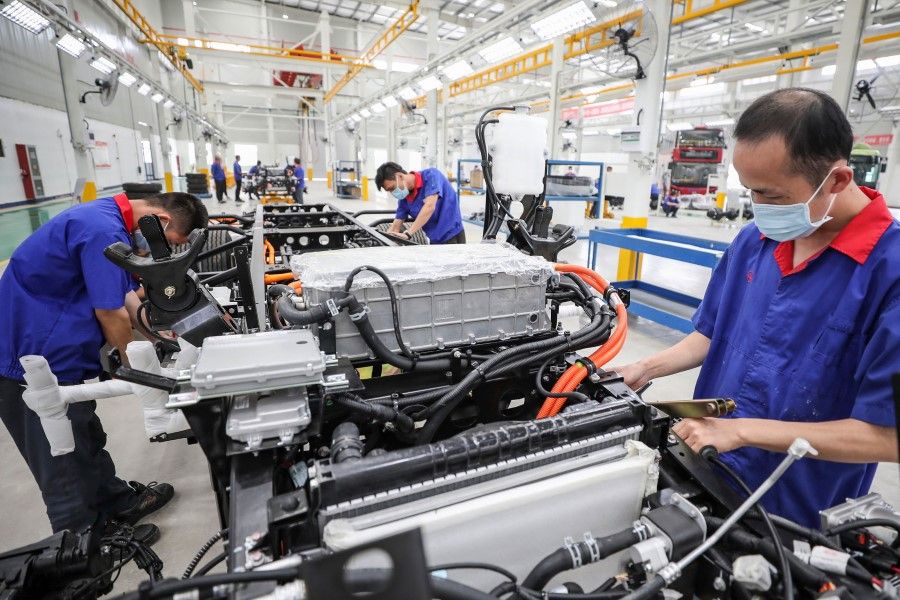
The company is currently putting more into research and development, such as developing alternative fuel vehicles and driverless vehicles, and brake components in line with the automobile industry's greater demand for safe automation.
Li is confident about the future. He said, "Anyone can make traditional components; there is an oversupply of those. We might as well start now with R&D into making new products, in place of imported components."
With uncertainty comes new business opportunities
With China rolling out various measures to stimulate overseas trade, and some countries gradually coming out of lockdown, some industry players are confident of seeing trade recovery, in particular, bounceback in the ASEAN region and emerging markets, in the second half of this year.
Teo Siong Seng of PIL said, "Now, the concern is that there will be a second wave of the coronavirus. With the US coming out of lockdown given its current situation, it is hard to say. The coronavirus is also affecting people's propensity to consume, and in the long term, it may also change the way people work and travel, and their spending habits. All this makes consumer and trade recovery uncertain, but also brings new business opportunities."
